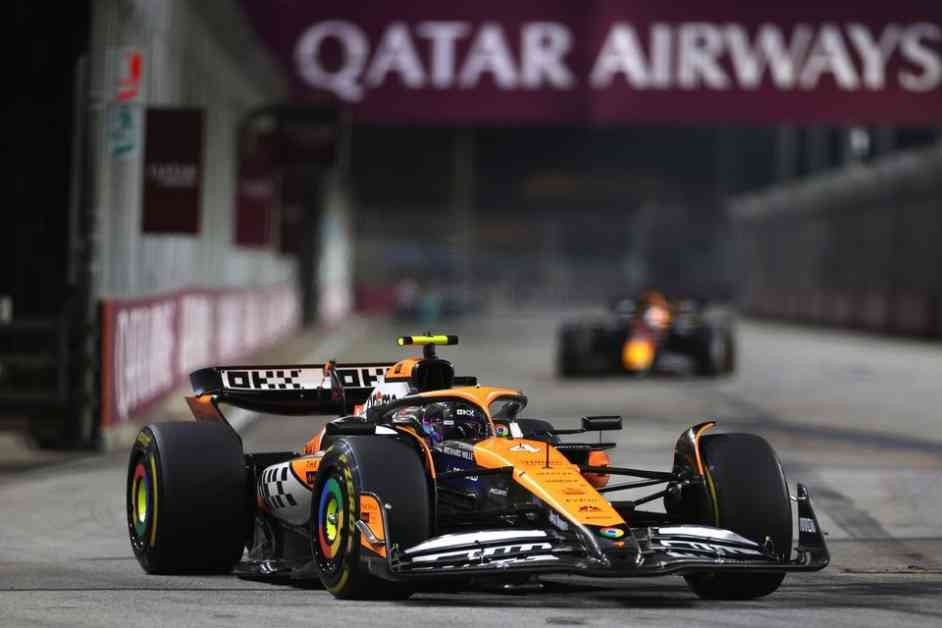McLaren’s Dominance in Singapore Grand Prix: A Masterclass in Maximum Downforce
In a season filled with intense battles at the front of the Formula 1 grid, McLaren’s standout performance at the Singapore Grand Prix showcased their dominance in a class of their own. While the competition has been fierce throughout the year, the gap that McLaren opened up in Singapore was truly remarkable.
Just a week after a thrilling race in Baku where Oscar Piastri fought tooth and nail with Charles Leclerc, the contrast in Singapore was stark. Lando Norris, McLaren’s rising star, delivered a flawless performance in qualifying, establishing a comfortable lead early on and then extending it to nearly 25 seconds ahead of Max Verstappen before the pitstops. Christian Horner, Red Bull’s team principal, even noted that Norris was “taking the p**s” with his impressive speed.
What made McLaren’s performance even more impressive was the fact that they had made minimal upgrades to their car for the Singapore race, with only a revised beam wing being introduced. The sudden turnaround in their performance within just a week left many scratching their heads. However, the key to understanding McLaren’s success lies in their expertise in maximizing downforce levels for specific circuits.
Each Formula 1 team has its own strengths and weaknesses based on the downforce requirements of each track. Mercedes excels on high-speed tracks, while Ferrari favors top speed and slow corners. Red Bull, on the other hand, is known for its aerodynamic efficiency. What Singapore revealed is that McLaren surpasses all others when it comes to maximum downforce circuits.
Andrea Stella, McLaren’s team boss, emphasized the importance of the MCL38’s performance at high levels of downforce required for the Marina Bay circuit. He highlighted that McLaren’s competitiveness in races where downforce is prioritized is a testament to the team’s aerodynamic efficiency. Throughout the season, McLaren has consistently excelled when drag is not a significant factor, showcasing their prowess in maximizing downforce levels.
Stella noted that McLaren has invested heavily in high downforce configurations, which has paid off in races like Hungary, Zandvoort, and Singapore. The team’s ability to retain downforce while reducing drag has been a key factor in their success on circuits that demand maximum downforce.
Furthermore, McLaren’s recent success can also be attributed to their growing familiarity with winning races. As the team continues to perform at the front of the grid, they have honed their race execution and strategic decisions. Stella highlighted the importance of adapting to the new challenges that come with leading races, including internal competition and defensive strategies.
The team’s experience in handling races from the front has allowed them to maximize their opportunities and secure victories with precision. Their ability to adjust their race weekend schedules and strategic approaches demonstrates their evolution as a top contender in Formula 1.
Looking ahead, McLaren’s dominance in Singapore serves as a testament to their expertise in maximizing downforce levels and executing races with precision. As they continue to push the boundaries of aerodynamic efficiency and strategic decision-making, McLaren is poised to remain a force to be reckoned with in the competitive world of Formula 1.












